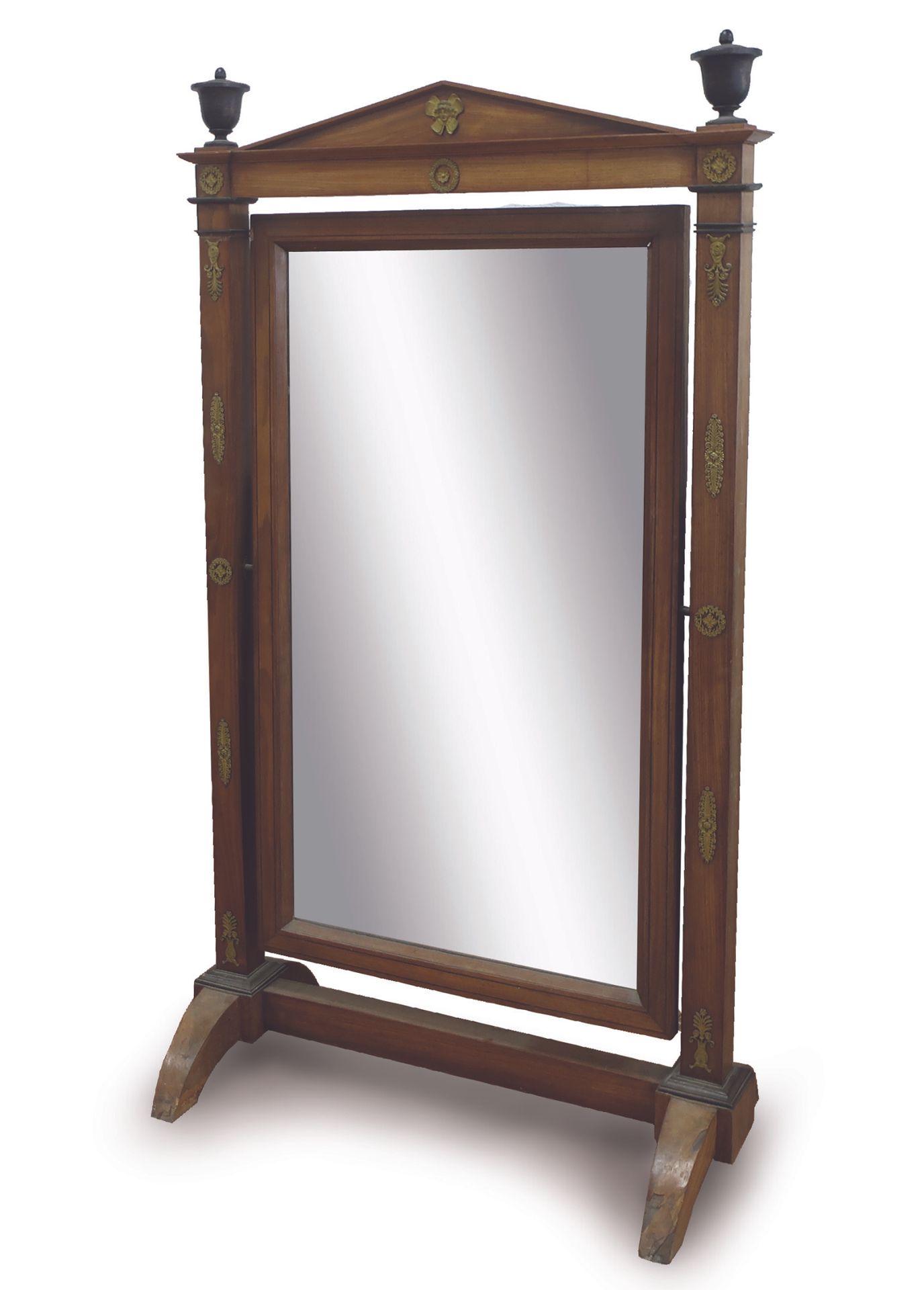Description
A large Empire period mahogany and blond mahogany veneer psyche mirror, the pilastered uprights surmounted by two cassolettes and a triangular pediment, arched sheath feet, ormolu ornaments (pitted mirror, missing veneer). H. 190 cm. Width 104 cm. Depth 56 cm
523
A large Empire period mahogany and blond mahogany veneer psyche mirror, the pilastered uprights surmounted by two cassolettes and a triangular pediment, arched sheath feet, ormolu ornaments (pitted mirror, missing veneer). H. 190 cm. Width 104 cm. Depth 56 cm
You may also like
